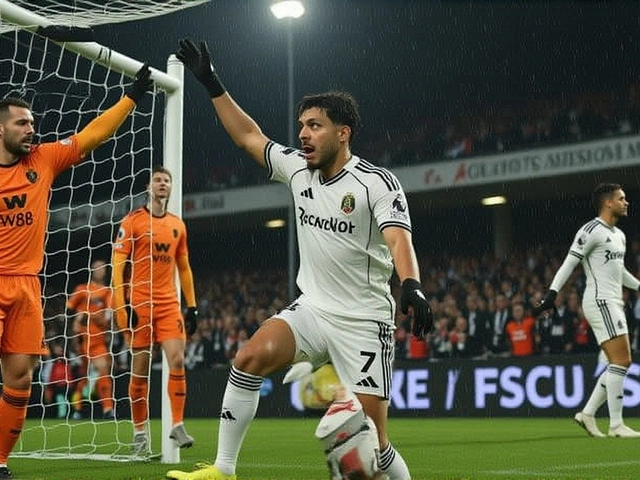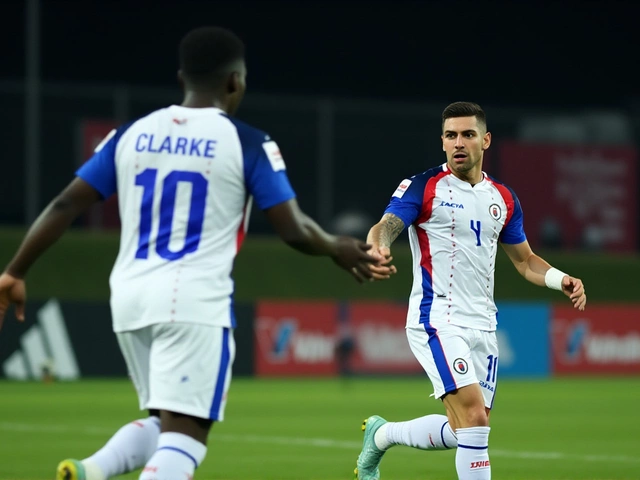The South African national rugby union team — the Springboks — finally conquered the Aviva Stadium on Saturday, November 22, 2025, smashing a 20-year curse with a gritty 24-13 victory over Ireland in the Autumn Nations Series 2025Dublin. It wasn’t pretty. It wasn’t pretty at all. But it was brutal, physical, and utterly decisive. For the first time ever, the Boks left Dublin with a win — and they did it by turning the scrum into a weapon of mass disruption.
Scrum Warfare and the Referee’s Whistle
From the first set piece, it was clear this wasn’t going to be a game of finesse. The Springboks’ front row — led by Thomas du Toit and Malcolm Marx — didn’t just win scrums; they dismantled them. English referee Matthew Carley, already under pressure from the Irish crowd, had no choice but to respond. Four yellow cards. One red. All for the Ireland pack. Dan Sheehan, Tadhg Furlong, and two others were sent to the sin bin. At one point, Ireland played with just 13 men on the field for over 15 minutes. And still, they held on. Barely.
"The scrum was the difference," said former Springbok lock Bakkies Botha in post-match analysis. "I’ve seen a lot of scrums. This was the most controlled, relentless one I’ve seen in a decade. They didn’t just push — they broke the spirit of the Irish front row. Carley had to act. And he did."
Try Scoring and the Breakthrough Moments
South Africa struck early. Fullback Damian Willemse darted through a gap created by a perfectly timed delayed pass from Damian de Allende — a move so clean it looked like a training drill. Five minutes in, 7-0. By halftime, it was 19-7. Ireland’s lone try came from hooker Dan Sheehan, converted by Jack Crowley. But even then, the momentum never shifted. The Springboks didn’t need to score more — they just needed to survive.
Then came the dagger. Flyhalf Sacha Feinberg-Mngomezulu — a 22-year-old who’d barely started his international career — burst through a collapsing Irish defensive line after another monstrous scrum. The ball popped loose. Wilco Louw delivered a shoulder charge that sent two Irish defenders stumbling. The space opened. Feinberg-Mngomezulu sprinted. Touchdown. 24-10. The conversion missed. It didn’t matter.
Who Carried the Load?
The official match report named six unsung heroes: Wilco Louw, Thomas du Toit, Malcolm Marx, Johan Grobbelaar, Boan Venter, and Gerhard Steenekamp. No stars. No flashy names. Just men who refused to move. Venter, the number eight, made 21 tackles. Grobbelaar, the replacement scrumhalf, played 18 minutes and didn’t fumble a single pass. Louw, the lock, was the enforcer — the one who made Caelan Doris look like he was running through molasses.
Meanwhile, Ireland’s captain Caelan Doris ran 147 meters and made 16 tackles. His effort was heroic. But heroism doesn’t win games when you’re down to 13 men and your scrum is a wrecking ball.

Why This Win Matters
This wasn’t just a win. It was a psychological reset. The Springboks had lost their last seven matches in Dublin. Seven. Since 2004. Each loss chipped away at their confidence. Each defeat was framed as "Ireland’s fortress." Now? The fortress is breached. And the Boks didn’t just break in — they tore down the walls.
"They didn’t beat us with speed," said Sam Prendergast, Ireland’s flyhalf, after the game. "They beat us with will. And we didn’t have enough left to match it. Not after the cards. Not after the scrums. Not after the pressure."
The victory extends South Africa’s winning streak on their 2025 Castle Lager Outgoing Tour to five straight. Their next test? A December clash with New Zealand in Pretoria. But first, they’ll savor this.
The Numbers That Tell the Story
- 3 tries by South Africa (Willemse, Reinach, Feinberg-Mngomezulu) vs. 1 for Ireland (Sheehan)
- 4 yellow cards issued to Ireland — 3 to the front row alone
- 1 red card (confirmed by video review, though not shown live)
- 13 minutes Ireland played with 13 men — including the final 11 minutes of the match
- 98% scrum success rate for South Africa — 13 of 14 put-ins won
- 24-13 final score — the largest margin of victory for South Africa in Dublin since 2004

What’s Next?
For the Springboks, this win signals a return to their old identity: physical, relentless, scrum-based dominance. They’re no longer just a team that wins on talent — they’re a team that wins on will. Their next challenge? Facing New Zealand in a high-stakes Test in Pretoria on December 14. If they bring the same intensity, the All Blacks might be in trouble.
For Ireland, the questions are louder. Can their front row recover? Will coach Andy Farrell rebuild trust in the set piece? And can they find a way to compete without relying on referees to even the odds? Their next match — against Argentina in November — will be a true test of resilience.
Frequently Asked Questions
How did the Springboks’ scrum dominate so completely?
The Springboks’ scrum was built on precision, timing, and relentless pressure. Thomas du Toit and Malcolm Marx anchored the front row, while Wilco Louw and Gerhard Steenekamp provided unmatched drive from the second row. They targeted Ireland’s weak links — particularly Dan Sheehan and Tadhg Furlong — and exploited their fatigue. By the 60th minute, Ireland’s scrum was collapsing under its own weight, forcing referee Matthew Carley to penalize repeatedly. South Africa won 98% of their own put-ins — a near-perfect rate in elite rugby.
Why did Ireland receive so many yellow cards?
Ireland’s front row — already under pressure — began to collapse under the Springboks’ weight. Dan Sheehan, Tadhg Furlong, and two other forwards repeatedly collapsed scrums and failed to bind correctly under extreme force. Referee Matthew Carley, under pressure to maintain safety and fairness, had no choice but to issue cards. Video analysis confirmed at least four yellow cards and one red, all stemming from scrum infringements. Ireland’s coach admitted post-match that their scrum technique had "regressed" under pressure.
Who was the most important player for South Africa?
While captain Siya Kolisi led with presence, the true MVP was Wilco Louw. The lock made 18 tackles, disrupted three lineouts, and delivered the game-changing shoulder charge that set up Sacha Feinberg-Mngomezulu’s try. His physicality broke Ireland’s defensive rhythm and forced them into errors. Louw’s performance was so dominant, he was named Man of the Match by both Springboks Rugby and the official match analysts — a rare honor for a forward in a high-scoring game.
What does this mean for the 2026 Rugby Championship?
This win signals a return to the Springboks’ traditional power game — one that could dominate the 2026 Rugby Championship. With their scrum back in control and their forwards showing renewed discipline, South Africa is now a serious threat to New Zealand and Australia. Their ability to control games through set-piece dominance, not just pace, makes them unpredictable. If they maintain this level, they’ll be favorites to lift the trophy.
Is this the end of Ireland’s dominance at Aviva Stadium?
Not necessarily — but it’s a wake-up call. Ireland had won 12 of their last 13 home games against top-tier teams since 2018. But this loss exposed a vulnerability: their scrum can’t handle elite physicality. If they don’t overhaul their training and recruitment for the front row, they’ll keep losing to teams with stronger set pieces. The Aviva Stadium is no longer an impenetrable fortress — just a very tough venue where preparation matters more than home advantage.
What’s the historical significance of this win?
Before November 22, 2025, South Africa had lost all seven of their previous Tests in Dublin — dating back to 2004. They’d been outscored 217-85 in those games. This win broke a 21-year hoodoo and gave the Springboks their first-ever victory at Aviva Stadium. It also marked their first win over Ireland in Europe since 2014. The psychological weight of this result is immense — it proves the Boks can win anywhere, even in the toughest environments.
- Poplular Tags
- rugby
- Springboks
- Ireland
- Aviva Stadium
- scrum dominance











